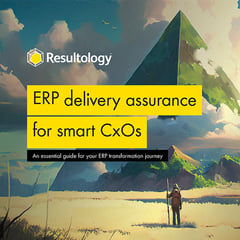It’s a Saturday in July and it’s raining.
I’m on the way to a wedding in London on one of Virgin’s finest.
Because I’m conditioned to work on trains after 15 years of longitudinal business travel between the North West and London, I packed my Chromebook for the journey.
Up on the luggage rack is my suit carrier with a brand new deep purple (the colour, not the prog-rock band) suit. As I stare upwards, trying to remember not to forget my suit, the luggage rack starts me thinking about the early days of train travel.
The fact that the UK didn’t have a unified timezone until the emergence of the railways and need to standardise time for timetables.
The fact that seaside holidays and resorts came about because of rail travel. And, the fact that the need for new forms of luggage emerged as different transport modes evolved - from horse, to carriage to train to car to plane.
Take the portmanteau - a leather case with 2 adjoined parts and a hinge which enabled it to be used for hanging clothes. A kind of small portable wardrobe.
Porter - to carry.
Manteau - coat.
Ironically, the word itself has since been adopted to mean a word created of 2 adjoined parts.
Portmanteau words like Oxbridge, Nylons, Brangelina, Microsoft and Gaydar were all created for convenience by adjoining 2 words into a single mash-up.
You can eat Brunch with a Spork before driving through the Paris Smog in a Renault Twingo* while you listen to the latest Brexit news on the radio. * Twist, swing and tango -a portmanteau threesome!
My inner lexicographer loves the fact that the word is an example of a portmanteau (two mashed-up French words), a metaphor for a Portmanteau (both the case and the word have two parts), and the name of the case itself.
High geekery.
When psychologists Joseph Luft and Harrington Ingham stumbled on a new thinking model in the 1950s, they turned to the portmanteau technique to brand their brainchild. They’d started by thinking about the differences in what we know about things vs. what others know about things. They realised that what you know and what others know about the same thing are invariably different. Their Johari technique resulted in a simple 2x2 matrix and a set of adjectives that were placed on the Johari Window by their subjects.
The quadrants identified whether these adjectives were...
- Arena or Open Area - recognised by you and others
- Facade or Hidden Area - recognised by you but not others
- Blind Spot - recognised by others but not by you
- Unknown - not recognised by you or others
If, for example, we choose the adjective ‘mean’ - where would you and your peers place that word?
If you don’t recognise yourself as ‘mean’ but others do - then this is your blind spot.
You probably ought to work on that, right?
Try a few more. Where would you and others place the adjectives cheerful, observant, warm, trusted, relaxed, dignified?
Although the technique was developed as a therapeutic model, I’ve always found it useful as a consulting and communications tool. It’s especially useful in marketing - especially for positioning, messaging and branding.
I’m guessing that you probably haven't heard of the Johari Window before? My hunch is based on the fact that >90% of the people I mention it to haven't head of it either.
It's a bit niche.
Just by discussing the Johari Window technique in this blog (web log), I’ve used the Johari Window to move the Johari Window from Hidden to Open for some of you.
How meta.
Like lots of my rambles, I hope that you’ve taken something out of this before I shift to the payload that relates to my industry, but which may not be relevant to you. I'm marking out a "Stop reading if you want to..." signal here - as I’m conscious that I know about SAP but that you might not.
But if we’re both in the same quadrant, read on.
I'm going to plot some things from my industry in the Johari Window.
First, I want to plot SAP and their customers. Specifically, a single noun rather than an adjective - S/4HANA. And I'm plotting it from SAP's perspective.
You see, SAP knows everything about S/4HANA. They built it. They sell it. They support it.
But their customers know very little about S/4HANA.
S/4HANA is in the Facade quadrant.
No alt text provided for this image
But really, S/4HANA needs to be in the Open Arena. Because if SAP customers don’t understand it, they can’t adopt it. They can’t build a compelling business case for it. They can’t move to it. And there are lots of them to move.
Imagine that I think that I'm trustworthy but you think I’m not. The only way I can move trustworthy from Facade to Arena is to demonstrate my trust.
If I can’t, you won't trust me.
" I'm trustworthy. Honestly. "
I can say "I'm trustworthy. Honestly." at the top of my voice every day for a year.
But you won't buy it.
So, how exactly are SAP moving the needle from Facade to Arena for S/4HANA?
They’re not.
They’ve published a whole load of content - from a 900 page Simplification Catalogue (which is replicated for each new release) to fragmented App Library and Best Practice web sites, through to self-serving tools like the Transformation Navigator.
" Alles klar? "
Once SAP had solved that problem, the moved on to Leonardo.
Which quadrant does that live in?
Right. Facade again.
SAP customers couldn't work out if Leonardo was a product, a service or a Ninja Turtle.
In fact, it was so "Not known to SAP customers" that it made them feel like they actually knew more about S/4HANA.
Leonardo caused a temporary recalibration of misunderstanding.
Not to be deterred by this mass confusion, SAP doubled-down again and is now pushing the Intelligent Enterprise in the same quadrant.
There are some pretty diagrams. Some useful concepts.
But you can’t run a business on concepts.
You can’t build a business case for concepts.
You can’t battle your way out of a Brexit fuelled, despotic-leader-led fractured teetering economy with broken high-streets and consumer paranoia using concepts.
I’m sure there’s loads of cool, clever stuff in there somewhere. But every single SAP customer we speak to seems to be saying the same thing. I paraphrase...
“We need to move to S/4HANA by 2025 or we’ll be out of support."
"We don’t trust SAP because they’re holding us to ransom with this strategy."
"We have no idea how to build a business case for S/4HANA because we don’t know what’s different in S/4HANA."
"We don’t trust our Systems Integrator - they just want to sell us another big SAP re-implementation project."
"And, what’s all of this Leonardo and Intelligent Enterprise stuff - just an excuse to sell us more licences for add-on products?”
With this ringing in our ears, in January 2019 a few clever people in the Resulting team set out on a mission.
They decided to find a way to help SAP customers move S/4HANA from the Facade to the Open Arena of the Johari Window. To reduce confusion and alleviate frustration.
We spent the next 6 months building something that enables SAP customers to quickly find out what’s different in S/4HANA without the bullshit and complexity. Something that visualises the differences between ECC and each release of S/4HANA and that makes the information relevant to business people rather than expensive geeks and contractors.
We created a portmanteau of our own.
It’s called S/4Sight and looks like this... Clearly, I can't do a full demo in a blog.
But, if you run SAP and would like to express interest in S/4Sight before our full launch in September, drop me a message and we'll do our best to set something up.
Connect with me. Message me. Contact us. Whatever works.
P.S. If you work for SAP and think I'm bashing your product, I'm not. I think your product marketing sucks, but your products don't. I'm actually trying to do you a solid here - and help thousands of SAP customers plan their move to S/4HANA.
Kind of helping carry your coat.
Alles klar?










